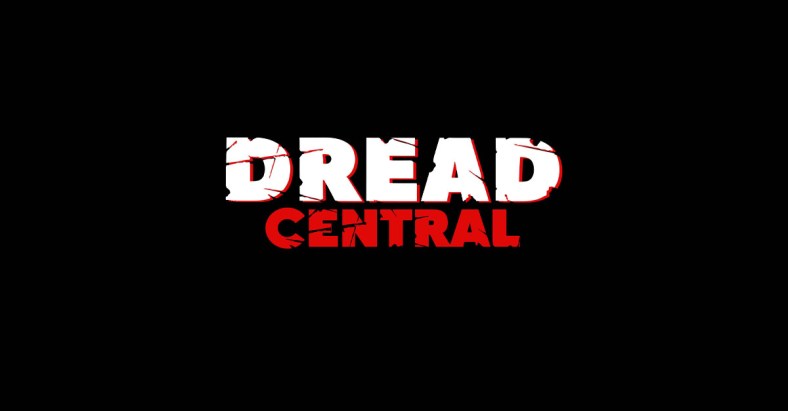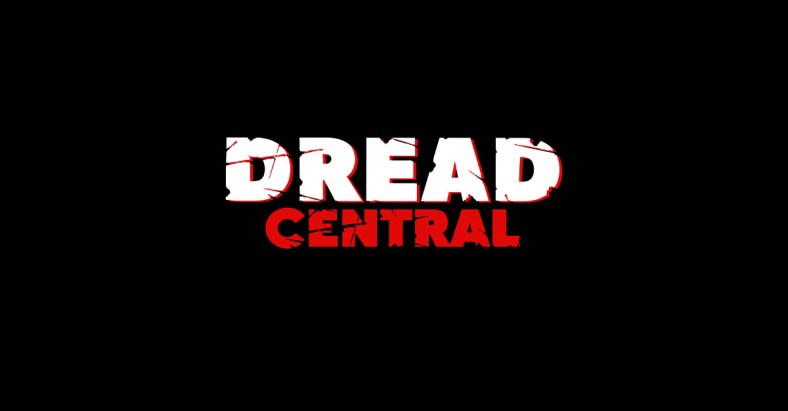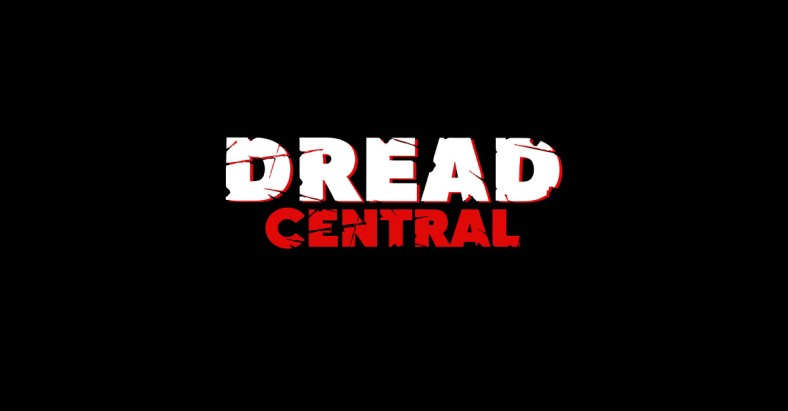THE CELL Turns 20: How Madonna & Marilyn Manson Influenced Its Unique Horror Visage

The Cell opens with Jennifer Lopez, dressed in an ivory feather gown, riding a majestic black horse across a sweeping desert dune. There’s an opulent musicality to the scene that sets the tone for the rest of the nightmarish film, which plays out almost like a music video. Perhaps it’s unsurprising then, that a number of real-life musicians influenced the movie’s ambitious visual panoply — an undoubtedly unusual artistic palette for a horror film, but one that has set it apart from its peers in the decades since it opened in theaters.
Synopsis:
The Cell takes a shocking, riveting mind trip into the dark and dangerous corridors of a serial killer’s psyche — a psyche that holds the key to saving the killer’s final, trapped victim who remains alive. Making this journey into the recesses of a killer’s nightmarish fantasy world is Catherine Deane, a psychologist who has been experimenting with a radical new therapy. Through a new transcendental science, Catherine can experience what is happening in another person’s unconscious mind.
Directed by Tarsem Singh (Immortals, Self/less), The Cell follows psychologist Dr. Catherine Deane (Lopez) and FBI agent Peter Novak (Vince Vaughn) as they enter the mind of comatose schizophrenic serial killer Carl Stargher (a superb Vincent D’Onofrio) in an attempt to obtain the location of his next imminent victim. While inside his psyche (which they access via a convoluted experimental VR treatment), reality and fantasy blur, forcing Catherine to face her own fears as well as Carl’s childhood trauma — and defeat “King Stargher,” the demonic manifestation of the killer’s violent urges — before it’s too late.
Upon its release in August 2000, the film received mixed critical reviews. Nevertheless, it was a commercial hit, grossing $104 million against a $33 million budget, likely thanks in part to the box office allure of its lead star, who was fresh off her star-making turn in 1997’s Selena biopic and the so-bad-it’s-good creature feature Anaconda.
Bridging the psychological, erotic, and crime thrillers popularized in the ‘90s (The Silence of the Lambs, Seven) and the lavish supernatural horror films of the early 2000s (13 Ghosts, The Others), The Cell flaunts some of the most strange, stunning visuals to be featured in a mainstream genre release. While few films can credit the works of such disparate artists as Madonna, Nine Inch Nails, and H.R. Giger as complementary influences, Singh’s gorgeous sci-fi horror spectacle is a breed all its own, drawing upon surreal contemporary art and modern music videos to construct a sui generis nightmare.
In particular, Singh, who got his start working on music videos for artists such as En Vogue and R.E.M., pulls visual inspiration from the 1990s output of various music stars. Not long after Lopez enters Carl’s twisted mind, she stumbles upon a ghastly gallery of women (who represent the serial killer’s victims) imprisoned like living dolls amid sadomasochistic gear and machinery. The horrifying tableau draws inspiration from the controversial Mark Romanek-directed music video for Nine Inch Nails’ 1994 song “Closer,” which features similarly morbid imagery of bondage. Later on in the film, Singh taps into the eerie ambiance of NIN’s 1998 video for “The Perfect Drug,” specifically during a haunting scene involving a vulture.


Marilyn Manson also plays a big part in the aesthetic of the movie. Traces of his music videos for “The Beautiful People” (1996) and “Tourniquet” (1997) echo within the film’s dreamscapes, with the latter likely influencing the look of one of Carl’s living dolls (who wears a white dress and is trapped in a glass case, much like the woman in Manson’s clip), as well as a later scene involving insects crawling on a character. Elsewhere, the shock rocker’s ghoulish flamboyance bleeds into King Stargher’s wardrobe, makeup, and gruesome mannerisms.
Madonna’s mystical 1995 music video for “Bedtime Story,” which, like The Cell, explores themes surrounding the subconscious, serves as a major aesthetic influence as well. The video (also directed by Romanek) features Madonna contained in a floating, spinning cube — a futuristic visual mimicked in a scene in which Catherine stumbles upon the cerebral manifestation of one of Carl’s drowning victims, also trapped in an eldritch cube. The sumptuous robe King Stargher wears during one of his attacks on Catherine bears a subtle resemblance to the regal gown worn by Madonna in the clip as well, and The Cell’s gothic industrial setpieces appear to take influence from the music video’s overall creative design. (“Bedtime Story” co-writer Bjork, who later worked with The Cell’s costume designer Eiko Ishioka, also appears to have had some fashion influence over the film as well.)


Relics from the dark drama displayed in Madonna’s 1998 music video for “Frozen” can also be spotted in the film’s dream sequences, as can some sartorial influence from her “Nothing Really Matters” video. (A red adornment worn over King Stargher’s brow upon his first encounter with Catherine recalls one of Madonna’s starker makeup looks from the latter clip, and Catherine wears a flowing red robe in yet another scene.)
But pop stars, rock gods, and nu-metal icons aren’t the only artists who inspired the look of The Cell. Beyond its music video inspirations, Singh’s debut feature film also mines from a number of fine and contemporary artworks.
There are visual nods to the macabre photographs of Joel Peter-Witkin, as well as references to the grotesque stop-motion dolls of the Brothers Quay, famous for their “Street of Crocodiles,” which Singh mentions in DVD commentary. H.R. Giger also impacted Singh, who drew upon the Swiss artist’s biomechanical style — particularly the Alien visual designer’s 1985 Future-Kill poster (at one point, Lopez wears a silver face mask that bears a striking resemblance to the design) and the impossible staircases of his 1966 work, “Schacht VI.”


Some influences are even more direct: In one scene featuring Catherine, a horse is vivisected and suspended inside a vitrine. The shocking moment is a visual homage to a real-life art piece exhibited in 1996 by British contemporary artist Damien Hirst. In another, Peter’s features melt off his face, recalling Salvador Dali’s surreal 1941 self-portrait. Yet another chilling dream sequence, in which three identical women perch motionless on sandy ridges while gazing upwards, mouth agape, against a stormy sky, pulls overt influence from Norweigian figurative painter Odd Nerdrum’s famous 1989 painting, “Dawn.” The director was reportedly inspired by the painting after spotting it in the home of his friend David Bowie, who purchased the work in 1990.


But it’s the cult artwork of Italian-Canadian director and artist Floria Sigismondi which is most pervasive within the film’s mind-bending dreamscapes. From the peeling paint, dark corridors, daguerreotype-esque imagery, and brutal-yet-beautiful Victorian gothic motifs decorating the vistas of Carl’s disturbed mind, Sigismondi’s decayed, textured palettes are omnipresent. (Coincidentally, Sigismondi worked on two of Manson’s most famous music videos, the aforementioned “Tourniquet” and “The Beautiful People,” but her music video credits extend to other artists such as Christina Aguilera, Sarah McLachlan, and Incubus.)
Within the pantheon of post-millennium horror, The Cell may not hold the same cinematic weight as films such as The Ring, Saw, or Paranormal Activity, but it brandishes a pastiche of unmatched artistic inspiration. Singh’s underappreciated film may invite viewers into a straightforward serial killer nightmare, but its florid visual aesthetic remains a mesmerizing fever dream for all who dare to enter.

Categorized:Editorials News
